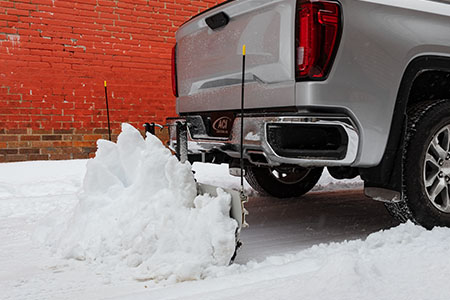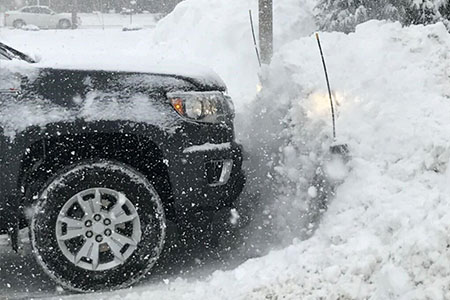SNOWSPORT® Plowing Tips

1. Snow Plowing Preparation
Know the terrain and determine best locations for snow piles. Mark or remove any potential hazards in plowing area as they can be easily covered by snow and forgotten. If blade is kept in warm storage, cooling outside prior to plowing prevents snow from freezing to blade. For gravel surfaces, we recommend packing the snow by making several passes with blade up to help prevent movement of loose rock when pushing snow. Periodically inspect hardware and components, perform maintenance as required.

2. Snow Removal Practices
Start a pass by accelerating slowly to allow for tire traction and blade to accumulate snow. The amount of snow to be cleared efficiently per pass is determined by snow depth and water content. Avoid overloading equipment. Adjust the width of each pass and plow more often during continuous snowfalls. As you come to the end of a pass, reduce speed and apply brakes as needed. For drifted, heavy snow, we recommend using our SNOWSPORT™ Hold Down Strap or Down Pressure Kit.
Always wear a seat belt and look where you are going when backing up, avoid relying on mirrors or back up cameras. Visibility can be reduced during heavy snowfall, use extra caution. Plow snow during low-traffic hours, paying attention to pedestrians and vehicles.

3. Making Snow Piles
When creating piles, drive straight with the blade set to center position. To stack snow on hardened piles, start a new pile then push onto existing snow bank. Plow snow on the same path toward snow pile to create taller snow banks. Ensure to push snow far enough for future snowfall, do not attempt to push old, frozen snow banks. Avoid plowing snow on someone else’s property without permission or obstructing the visibility of traffic. Do not apply down pressure when stacking snow.
